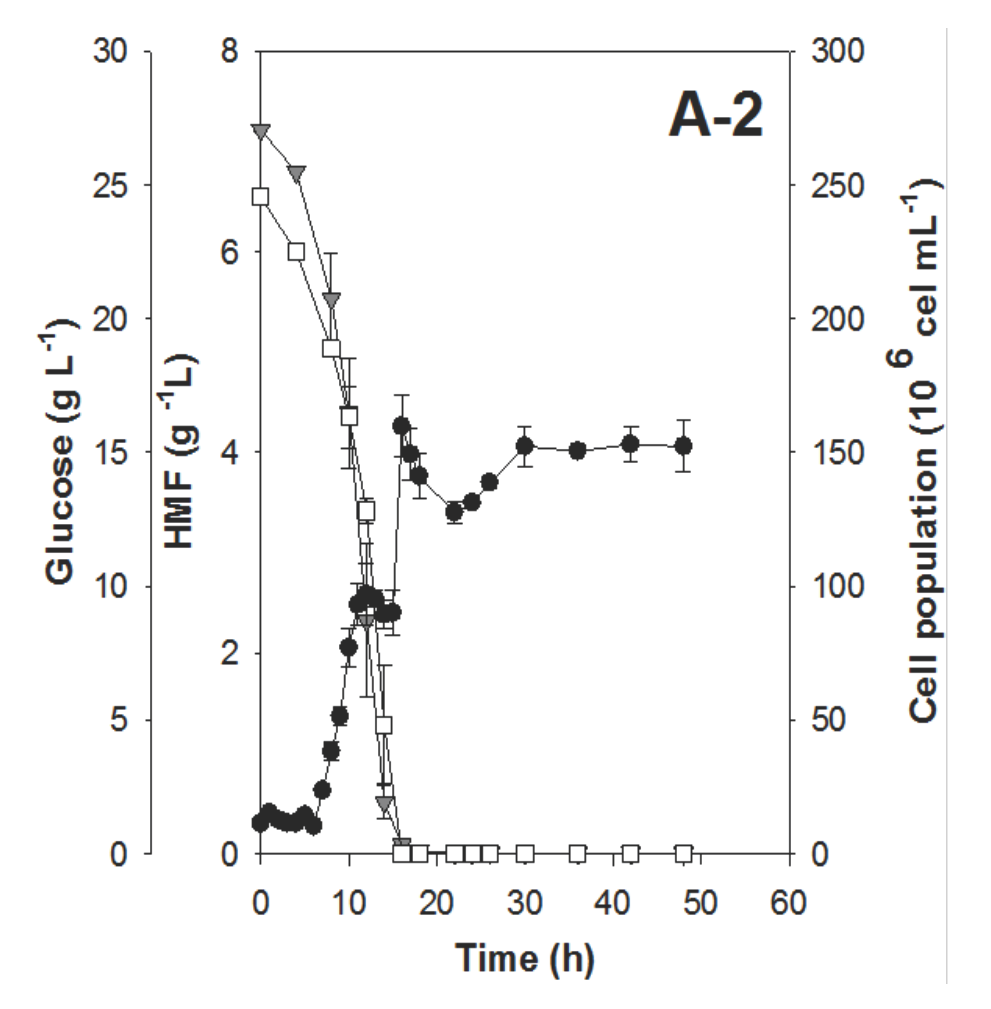 |
|
The yeasts used in the production of second generation ethanol are affected by inhibitory compounds as 5-hydroxymethylfurfural (HMF) and furfural that are releasing during the hydrolysis step; these compounds affect the fermentative capacities of the yeast. To find new yeast strains with outstanding capacities to be used in the production of second generation ethanol; in this study, we evaluated the physiological response to furan derivatives stress by native yeast Kluyveromyces marxianus (SLP1), and compared it with the commercial yeast Saccharomyces cerevisiae ethanol red (ERD). We used a chemically defined medium added with HMF and furfural at different concentrations; a control condition without inhibitors, and four stressing conditions, HMF 7 gL-1, furfural 3gL-1, HMF 3.5 gL-1 with furfural 1.5 gL-1, and HMF 7 gL-1 with furfural 3 gL-1. K. marxianus exhibited a greater capacity to assimilate the inhibitory compounds in less time than S. cerevisiae ERD; also, K. marxianus SLP1 strain showed better behavior to produce ethanol on inhibitory conditions. Despite the effects provoked by the inhibitory compounds, the yeasts could produce ethanol over 80% of conversion. In conclusion, the yeast K. marxianus SLP1 can be an option to produce second generation ethanol at industrial level.
Keywords: physiological response, Kluyveromyces marxianus, Saccharomyces cerevisiae, HMF, furfural, ethanol.
|
|
 |

